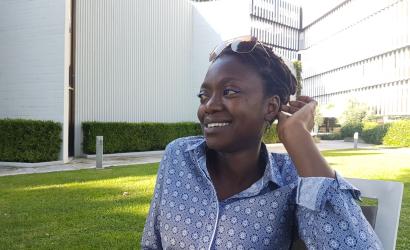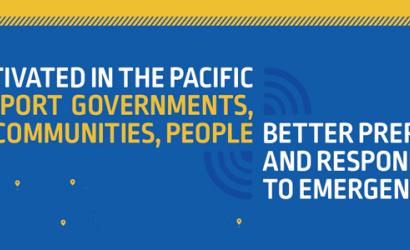Federated States of Micronesia (FSM)
The Federated States of Micronesia (FSM), a nation of 607 islands spread across the western Pacific, is acutely vulnerable to the impacts of climate change and natural hazards. Rising sea levels, typhoons, and saltwater intrusion are already threatening housing, freshwater supplies, agriculture, and coastal infrastructure. Coral reef degradation, driven by ocean warming and acidification, is undermining fisheries that are vital to the national economy and food security. These risks are especially severe for outer island communities, where relocation and adaptation are becoming urgent priorities.
To address these challenges, FSM is implementing its National Adaptation Plan (NAP), supported by the Green Climate Fund and coordinated by the Secretariat of the Pacific Regional Environment Programme. The NAP identifies long-term adaptation needs and strategies, with a focus on climate-resilient infrastructure, sustainable land use, and community-based planning.
Telecommunications infrastructure in FSM is being significantly enhanced through the East Micronesia Cable System (EMCS), a joint initiative by the United States of America, Australia, and Japan. This new undersea cable will connect Kosrae and Pohnpei (as well as Nauru and Kiribati) to transpacific submarine cables in the US, Australia, Japan, and Southeast Asia, providing FSM with faster, more reliable, and secure internet access. The project will reduce reliance on satellite services, improve access to digital government services, and support economic development across the islands.
FSM Telecommunications is the main public telecommunications provider, with an 80 percent coverage nationwide. It offers 4G mobile and internet services operating under a government mandate for uniform service delivery.
The Emergency Telecommunications Cluster supports preparedness activities to take the communities one step closer to being ready when the next natural disaster hits.
ICT Profile
Department of Environment, Climate Change and Emergency Management (DECEM)
Department of Transportation, Communications & Infrastructure
Telecommunication Regulatory Authority
105,500
The Federated States of Micronesia (FSM), a nation of 607 islands spread across the western Pacific, is acutely vulnerable to the impacts of climate change and natural hazards. Rising sea levels, typhoons, and saltwater intrusion are already threatening housing, freshwater supplies, agriculture, and coastal infrastructure. Coral reef degradation, driven by ocean warming and acidification, is undermining fisheries that are vital to the national economy and food security. These risks are especially severe for outer island communities, where relocation and adaptation are becoming urgent priorities.
To address these challenges, FSM is implementing its National Adaptation Plan (NAP), supported by the Green Climate Fund and coordinated by the Secretariat of the Pacific Regional Environment Programme (SPREP). The NAP process is identifying long-term adaptation needs and strategies, with a focus on climate-resilient infrastructure, sustainable land use, and community-based planning.
Telecommunications infrastructure in FSM is being significantly enhanced through the East Micronesia Cable System (EMCS), a joint initiative by the United States, Australia, and Japan. This new undersea cable will connect Kosrae and Pohnpei to Nauru and Kiribati, providing FSM with faster, more reliable, and secure internet access. The project will reduce reliance on satellite services, improve access to digital government services, and support economic development across the islands.
United States Dollar (USD)
6
20
5.82
Nationwide Integrated Disaster Risk Management and Climate Change Policy (2013)
Establishes national institutional arrangements for disaster preparedness, mitigation, response, and recovery.
Guides coordination between national, state, municipal, and village levels.
Includes Standard Operating Procedures (SOPs), hazard-specific contingency plans, and international support mechanisms.
Federated States of Micronesia National Information and Communication Technology (ICT) and Telecommunications Policy (2012)
Establishes a strategic direction for ICT and telecommunications development.
Aims to bridge the digital divide across FSM’s islands.
Supports economic and social development through improved connectivity.
Expand broadband access across all states.
Modernize legal and regulatory infrastructure.
Promote public-private partnerships.
Ensure safe and inclusive ICT environments, especially for children.
Enhance government transparency and service delivery.
FSM Division of Civil Aviation (DCA) is the responsible agency for all civil aviation matters, including potential future Unmanned Aircraft Vehicles (UAV) regulation.
As of now, the Federated States of Micronesia (FSM) does not have formal, codified regulations specifically governing Unmanned Aircraft Vehicles (UAVs) or drones.
In the absence of national laws, FSM recommends following the International Civil Aviation Organization (ICAO) standards and best practices for UAV operations.
General Safety Practices Suggested:
Keep drones within visual line of sight.
Avoid flying over people, vehicles, or private property.
Do not fly above 150 meters (490 feet).
Stay at least 8 km (5 miles) away from airports.
No Remote ID or registration is currently required.
Permits may be needed for drones over 25 kg or for commercial/research use

